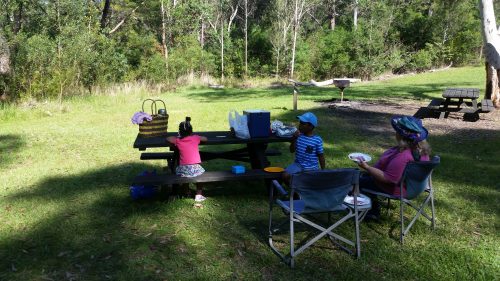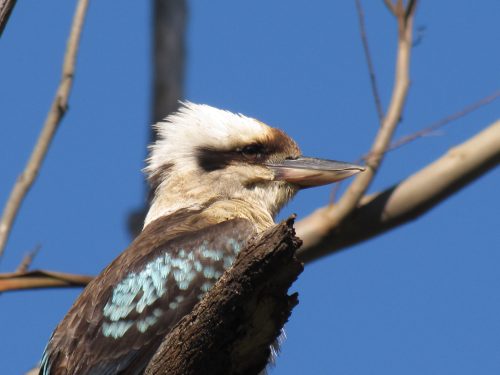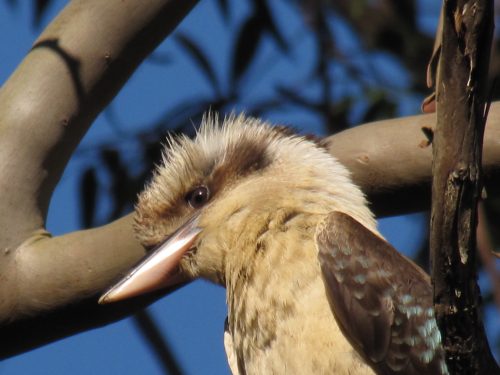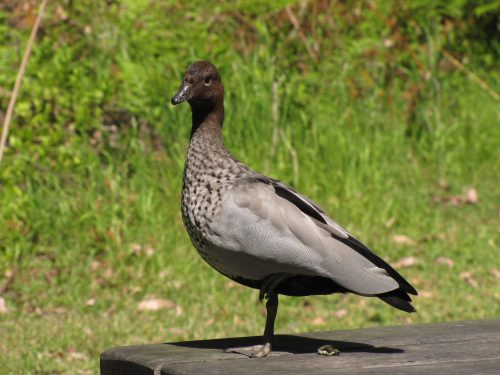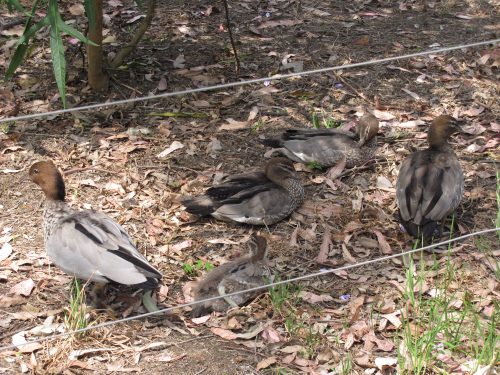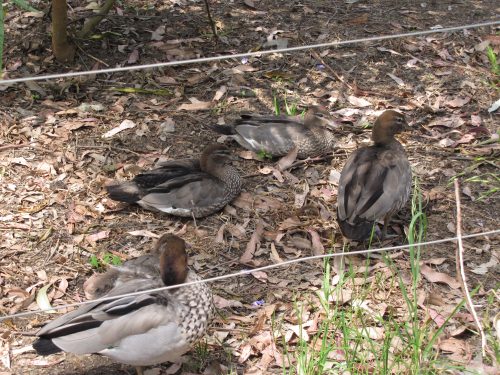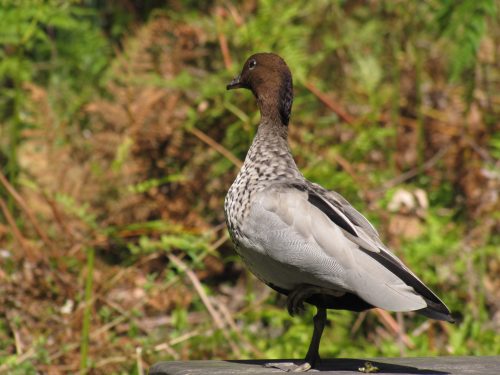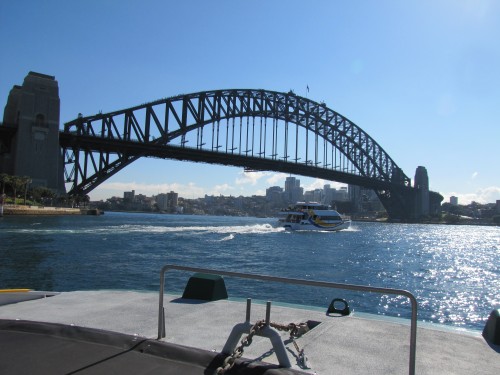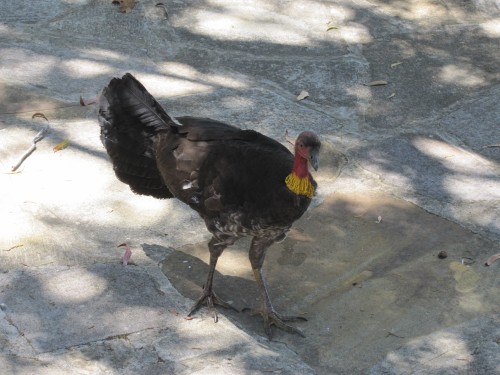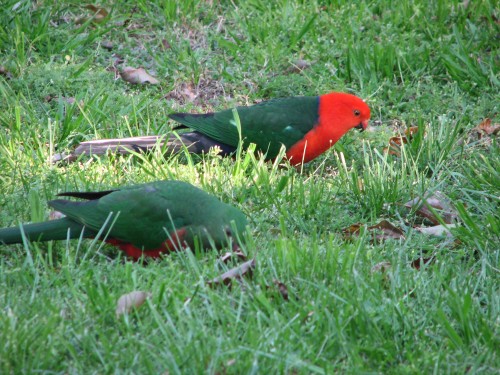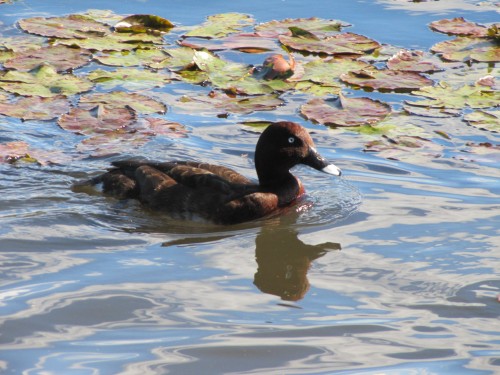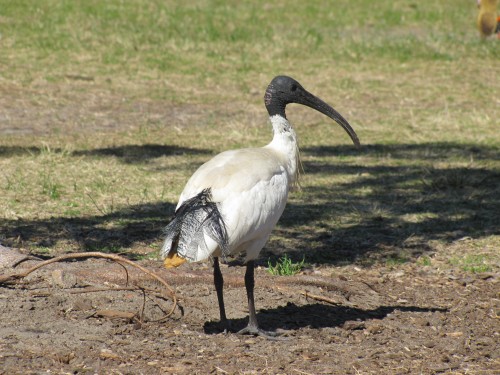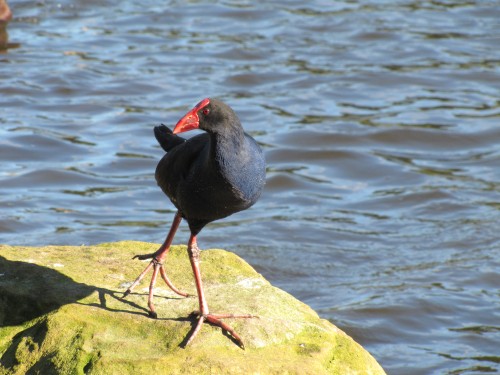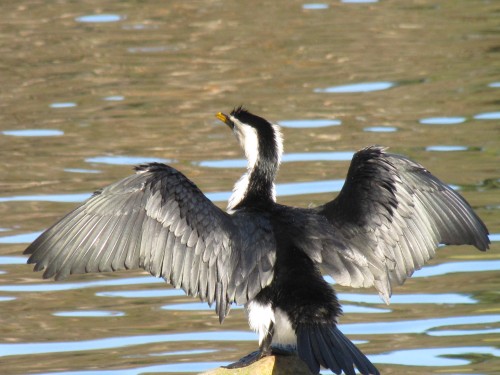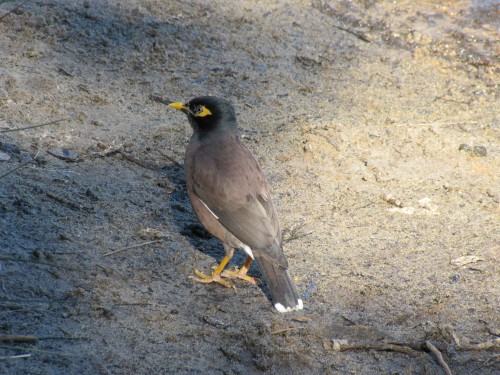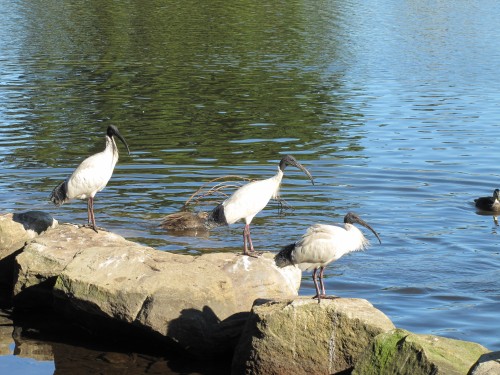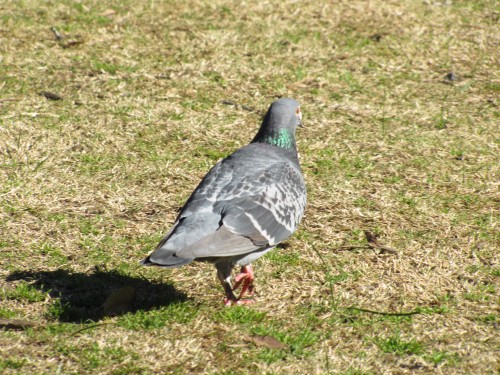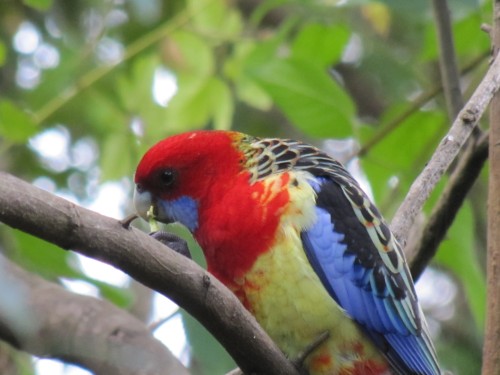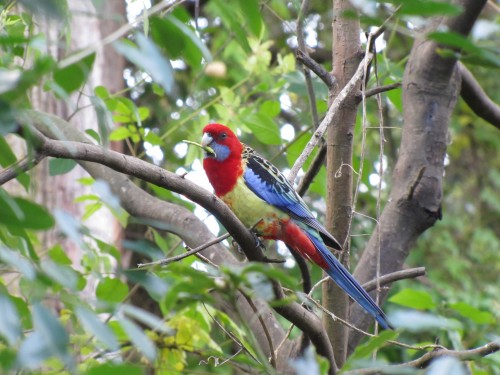That’s not what I expected
Yesterday, my wife and I took our two grandchildren, ages 8 and 5, on a picnic. We are currently staying with them here in Sydney during the school holidays. They are very energetic children and they needed to run off a little steam, so we took a picnic lunch, some balls, my binoculars, my grandson’s binoculars(he is starting to develop an interest in birds), our folding chairs, my camera and a thermos for a cuppa. And some treats from our favourite local bakery.
Lane Cove National Park
We drove the short 10-minute journey to this wonderful national park, just a short distance west of Chatswood. We set up for our picnic and enjoyed some barbecued sausages and the treats from the bakery. It was a clear day with the temperature in the mid-20s – perfect for a picnic. After lunch, we involved the children in a few games. These included searching for various natural objects such as finding three different kinds of leaves. They were quite entertained, especially when I suggested some running races. They are both excelling at Little Athletics so they enjoyed making up a short course and getting me to time their efforts while I had my cuppa. Too easy.
Slow birding
Meanwhile, the birding side of things was rather slow. Sure, the obligatory Laughing Kookaburras were perched nearby, just waiting for an opportunity to sweep down and snatch our food (see photos below). Small flocks of Rainbow Lorikeets streaked overhead, or squabbled noisily in nearby flowering gum trees (eucalypts). We heard the occasional Pied Currawong calling, along with several Australian Ravens. Two Australian Black-backed Magpies were quietly feeding on the grassed area opposite us, and I heard a number of Yellow-faced Honeyeaters in the nearby trees, though I did not get a good look at them. All very quiet and peaceful – just right for a relaxing afternoon.
An unexpected bird
Just as I was finishing my cuppa, a small flock of Noisy Miners (a native honeyeater species) started calling very noisily near the top of a nearby tree. I stood up and moved closer, training my binoculars on the spot where a hawk-like bird had landed. It was being severely harassed by the miners. I raised my binoculars and immediately identified it as a Pacific Baza. I had a good view for several seconds, long enough to identify it and to take a few photos before it flew off.
Photos
Alas.
My camera was twenty metres away on the picnic table next to where I had been sitting – so no photos.
Botheration!
In my haste to see the bird, I had clean forgotten to pick up my camera. This is rather sad because I would have loved to have taken a photo of this species. This is only the second time I can recall seeing this bird; the other time was several decades ago in northern New South Wales, well before I started bird photography. I cannot be absolutely sure about this earlier sighting because all of my notebooks are at home, some 1400 km or two days’ drive away.
Pacific Baza
This species is found along the coastal regions of New South Wales, Queensland, Northern Territory and northern Western Australia. It is quite common locally but on this occasion, I only saw the one individual. This is about the southernmost extension of its range, and they are rarely sighted south of Sydney.
They are one of Australia’s easiest hawk species to identify, with a small crest and bright stripes across their chest. You can see several photos here, as well as more information about the species.
Meanwhile, here are two photos of the Laughing Kookaburras which sat watching our food in the hope of snatching something.
Good birding,
Trevor
Ducks in Lane Cove National Park
On our most recent trip to Sydney in October, we were primarily there to look after our two grandchildren (ages 8 and 5) during the school holidays. This is a very pleasant duty we enjoy several times a year. They are, however, very energetic children and so there comes a time during our stay when we look for opportunities to have some down time.
Thankfully, my son’s home is only a short drive to some very pleasant parks, including Lane Cove National Park, a mere ten-minute drive away – subject to traffic conditions, of course. On several occasions, we had a few hours to ourselves, so we packed the folding chairs, a picnic lunch, a thermos for a cuppa and some biscuits. I always remembered to take my binoculars and camera with as well.
At one point I noticed a small family of Australian Wood Ducks grazing on the grass near where we had our chairs located. I grabbed my camera and managed a few nice shots of them. At one point, the male of the group stood guard on one of the picnic tables (see photo at top). He was obviously keeping watch over his little family of three young ones.
Although the male was on guard, he didn’t seem all that perturbed that I had approached to within a few metres to take my photos. This national park is very popular, and there are hundreds of visitors daily and probably thousands every weekend, seeing it is so close to the well-populated Chatswood CBD. I have found other species equally unafraid of humans, including some Laughing Kookaburras who snatched some of my wife’s lunch the same day I took the photos on this post. (In a few days I will post an article, with photos of this incident.)
I should add here that this is the Australian Wood Duck, not to be confused with the Wood Duck, a north American species, and quite unrelated as far as I know.
The Australian Wood Duck is a common species found throughout much of Australia, except for the driest parts of the inland. It is usually found near waterways, lakes, swamps and dams, and in parks and ovals, but it also can be see grazing on grasses and pastures quite some distance from water.
Newsletter: just a reminder that I will be starting a monthly newsletter in the New Year. You can subscribe below the comments section at the bottom of each article.
Further reading:
Birding with my grandchildren
I am currently staying with my son and family in Artarmon which is on the North Shore area of Sydney. They live just a few train station stops north of Sydney Harbour Bridge. Only last evening we drove over the bridge, something my son and grandson do every week but it is something special for me. I get to do it only once or twice a year.
Living in Murray Bridge in South Australia, we only get over to Sydney once or twice annually. Because it is over 1300km to drive, a journey which takes two whole days to complete, we only get over here frequently. My son and his family only come over to South Australia once every second year, mainly due to both work commitments and the restrictions of the school year.
While in Artarmon I get few opportunities to go out birding. There are some great birding spots within an hour’s drive or even closer. Lane Cove National Park, for example, is only a ten-minute drive away. Getting away from family is quite difficult, especially seeing our visits usually coincide with school holidays. The grandchildren, ages 7 and 4, are very reluctant to let us leave home, and our car is not set up for young children. On the plus side, even at their tender age they have become aware of the birds they see in their garden, as well as any seen while visiting local parks.
Birding in Artarmon
While we are here the majority of my birding is done from their garden. Fortunately, the neighbourhood has plenty of vegetation, including many large eucalypt trees.
Over the last week I have observed the following birds:
- Rainbow Lorikeets: very common, present in large numbers.
- Australian Ravens: very common, I often see small groups of up to 5 or 6 flying overhead.
- Pied Currawongs: very common, and very noisy – they call throughout the day.
- Laughing Kookaburras: more often heard calling than seen.
- Grey Butcherbirds: common and sometimes very vocal.
- Noisy Miners: this species is the dominant native honeyeater in this area. Very common in large numbers.
- Common Myna: an introduced pest species, becoming more dominant as the years go by.
- Welcome Swallow: common but not seen every day.
- Crested Pigeons: present in small numbers, rarely more than about 4 or 5 in any one location.
- Sulphur-crested Cockatoos: often seen or heard flying overhead, sometimes in flocks up to 40 or 50.
- Rock Doves: not seen regularly in or from the garden, but present in large numbers near the local shops.
- Australian Brush-turkey: I haven’t seen this large bird in or near the garden, but my grandson reports that he often sees one or two in his playground, just under 1km from his home.
Other species not yet seen or heard on this visit, but have been seen during past visits include:
- Tawny Frogmouth
- Galah
- Australian King Parrot
- Australian Magpie
- Willie Wagtail
- Common Blackbird
- Common Starling
- Magpie Lark
Some birds of Centennial Park in Sydney
On our last day in Sydney earlier this year we went with our son and his family to a picnic at Centennial Park, south of the CBD. They were meeting with some of their friends. It was a Sunday and the weather was perfect: a bright, cloudless sky and a gentle breeze. Many other Sydney residents thought so too, and so the park was very crowded.
We had planned to meet near the playground, seeing that children made up half our number. I was on our third circuit of the road through the park when a space opened up about 100 metres from the group. I really think that Centennial Park could do with three or four decent playgrounds scattered in different sections, instead of just one tucked away in a corner with limited parking. Just saying.
As we ate our lunch and chatted I kept an eye scanning the park and the sky for birds. As the afternoon wore on I managed quite a respectable list of species. My camera was also kept handy, focussing particularly on those species which were quite at home mixing with the human visitors. Many times we had to shoo away the White Ibises and Noisy Miners attempting to raid our friends’ picnic food when they were too busy talking, or were watching the children play.
Later in the afternoon I took a short walk towards a nearby small lake. (There are about 9 of these of varying sizes.) It was here that I managed a few extra photos, mainly of water birds. It was a wonderful conclusion to four lovely weeks staying with our son and his family.
The following photos are just a sample of those taken. I’ll share more tomorrow.
The beautiful Eastern Rosella
Earlier this year my wife and I had a day visit to the Lane Cove National Park. We were visiting our family for a few weeks and on this occasion we were free from grandparent duties.
Lane Cove National Park near Chatswood north of the Sydney CBD and is only about 15 minutes drive from my son’s home, so visiting is quite convenient. We went on a weekday, so there were only a few people around. Lunch time walkers, runners and cyclists made up the majority of visitors to the park.
As we were about to eat our lunch I noticed an Eastern Rosella fly in to a nearby tree. I steadily walked to within camera range and managed several good photos. Every time I see this species I marvel at the wonderful combination of colours.
Eastern Rosellas are quite common in the eastern parts of Australia. They are also present in the south east of South Australia and were introduced to the Adelaide region. We occasionally see one in our garden at Murray Bridge. It keeps company with the local Mallee Ringneck parrots. I’m not sure if this is a cage escapee or a case of their range steadily expanding.
Whatever the reason, we always enjoy seeing “our” rosella.
